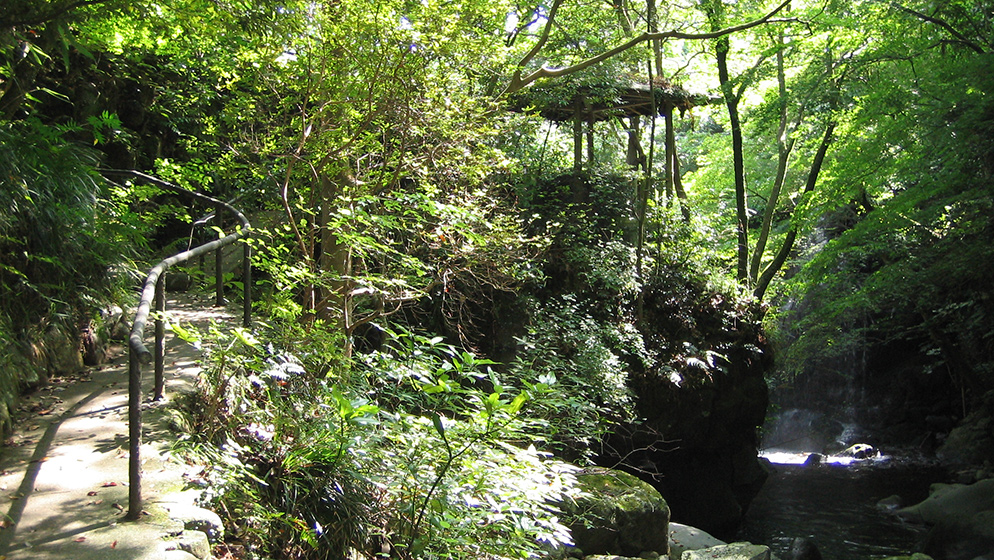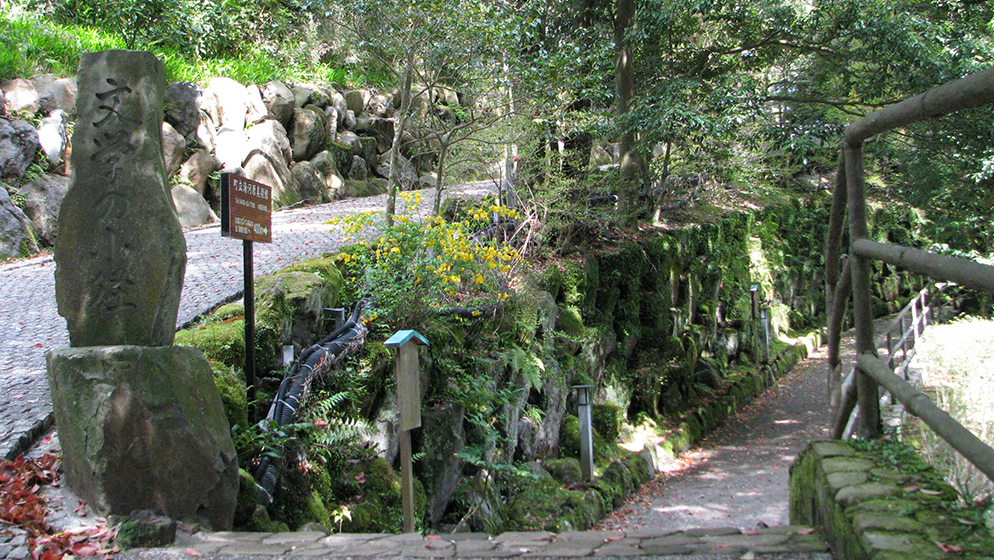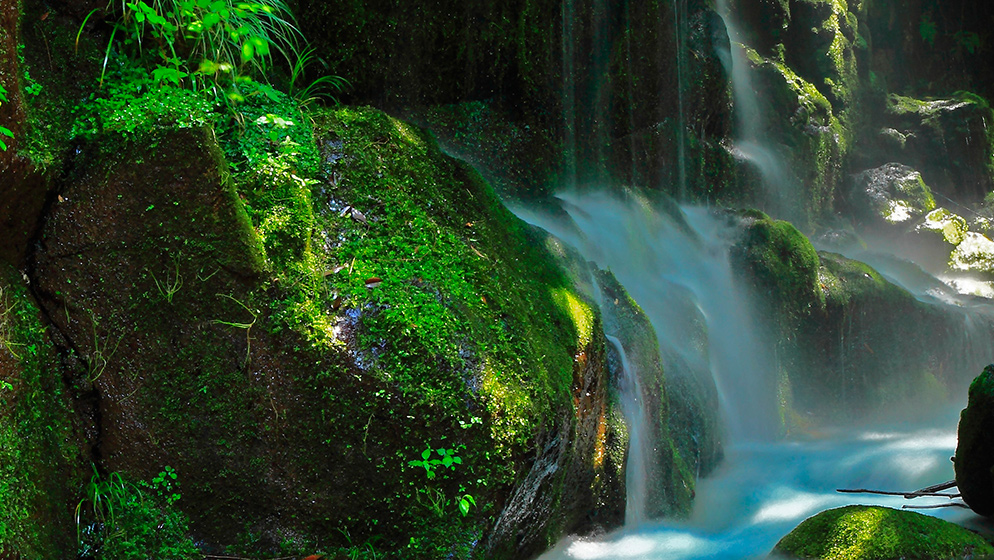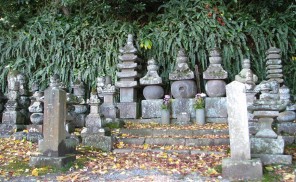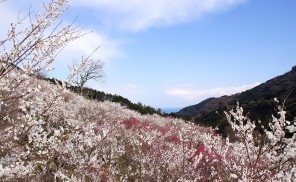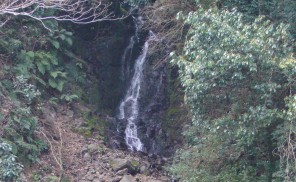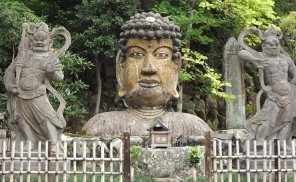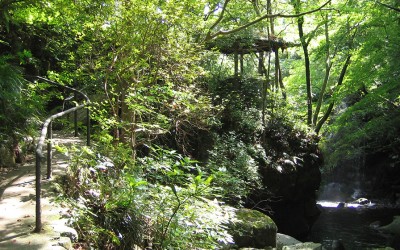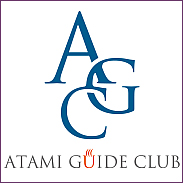Manyo Park
Manyo Park is certified as one of “The 100 Best Historical Parks in Japan,” reasons for which include its symbolization of Yugawara, and the fact that many writers, artists, and other people of cultural merit have visited it.
About “The 100 Best Historical Parks in Japan”
As a project commemorating the 50th anniversary of the City Park Law Enforcement, the City Park Law’s 50th Anniversary commemoration executive committee evaluated and certified historical parks. They looked for excellent historical and cultural resources that have contributed to local revitalization. Manyo Park was selected out of 332 applications from across Japan.
| Admission | Free, with unrestricted entry. |
|---|---|
| Access | 566 Miyakami, Yugawara-machi Take the bus for Oku-Yugawara/Fudodaki from Yugawara Station, and get off at Ochiai-Bashi Bus Stop (about a 12-minute ride). Manyo Park is just across the bridge. |
| Inquries | Yugawara Onsen Tourism Association Phone: 0465-64-1234 |
1. Manyoshu Poem Monument (Nobutsuna Sasaki)
“Ashigari no Toi no Kafuchi ni izuru yu no yonimo tayorani koroga iwanakuni…” (She says, “The relationship between you and me will last just like the hot spring at Toi, Ashigara, but…”)
This poem is about the way hot spring water wells out, and is the only one in the Manyoshu collection of 4,500 poems to describe a specific hot spring in such a manner. Referring to Yugawara Onsen, it is known as “The Song of Toi, Ashigari.” The poem on this monument was calligraphied by Seiho Takeuchi, a master painter in the art world of Kyoto. Mr. Takeuchi’s original work is exhibited at Yugawara Art Museum.

2. The Monument of Doppo Kunikida
Doppo Kunikida, a great writer in the Meiji era (1868 ~ 1912 AD), often visited Yugawara and created works about it. “Yugawara-yuki” (“Visiting Yugawara”), in which the Yugawara of days past is portrayed, ends with this sentence: “When I visited the ravine in Yugawara, I felt as if I were pushing my way deep into the clouds.” After his death, this monument was built by people with connections to Yugawara.

3. The Monument of Yojoen (Heihachiro Togo)
When Yugawara was designated as a health resort for sick and wounded people after the Russo-Japanese War, the Okura family’s villa, which was in one corner of the park, was opened for public use as a “Yojoen.” Count Heihachiro Togo, who rested there, was very enamored with the natural splendor of the area and wrote about it, expressing his gratitude to the Okura family. In October of 1912, this monument was built by Tetsuya Kawada, the principal of Tokyo Takachiho School, along with its instructors.

4. The Monument of Umenokado
“Koe kakete hoshii tsubaki no aotsubomi,” (“A green camellia bud is waiting for a man to call to her.”) by Umenokado Kanao.
The author of this haiku loved Yugawara Onsen beyond all else, and is said to have visited this town every year for the annual Camellia Festival. This poem was written during one of those festivals.

5. Taishido Hall (Yuzo Yamamoto)
In 1960, all the members of the building society constructed this hall in honor of Prince Shotoku’s great achievements. It was built in imitation of the Yumedono (“Hall of Dreams”) of Horyuji Temple in Nara.

6. Kumano Shrine and the Hot Spring Water Splashing Festival
The deity of this shrine is said to have been transferred from Kii Province (modern-day Wakayama Prefecture and part of Mie Prefecture), but when this took place is unknown. Also called “Yu-Gongen,” the deity is the guardian of hot springs and of health. On the fourth Saturday and Sunday of May, the “Annual Festival of Kumano Shrine” is held, along with the “Hot Spring Water Splashing Festival.”

7. Rifuku Shrine
One legend regarding the discovery of Yugawara Onsen has it that an old injured raccoon dog was completely healed by the hot spring waters. To repay his debt of gratitude, he spoke about the wonders of Yugawara Onsen to people living in the neighborhood, which helped the area become famous. Kind-hearted people deified this place as Rifuku Shrine, with “Ri” meaning “raccoon dog,” and “fuku” denoting “happiness.”

8. The Firefly Party and the Japanese Iris Exhibition
Every year from early to mid-June, at the Firefly Party event you can see Genji fireflies (Luciola cruciata) flying about. It is held in Kabokuen Park, and night stalls are opened in the square in front of the tourist hall from 7:30 p.m. to 9:00 p.m.
During this period, the Japanese Iris Exhibition is also held at the multi-purpose plaza on the first floor of the tourist hall.

9. The Morning Market for Tourists
At the Morning Market for Tourists, which is held every Sunday from around 6:00 a.m. to 9:00 a.m. in the square in front of the tourist hall, delicacies unique to Yugawara from the sea and mountains are available, along with rare souvenirs.

10. Manyotei
This tea ceremony house was designed by Mr. Sutemi Horiguchi (1895-1984), one of the architects representing Japan.
You can enjoy matcha green tea served with sweets.
Hours: 10:00 a.m. – 3:00 p.m.
Charge: 400 JPY per cup (served with sweets)
Closed: Mondays & Wednesdays (when a national holiday falls on Monday or Wednesday, Manyotei is open that day and closed the next day), and for a few days before and after the New Year holiday. There are also some unscheduled holidays.


